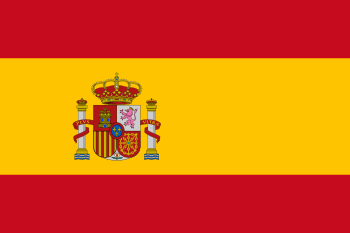I have written this article to bring to the attention of my fellow Spanish historians that they have overlooked one of the prime sources of the history of the Canary Islands, which well deserves further research.
Solomon Berliner, as the name suggests, was Jewish. He was also a native New Yorker. President Grover Cleveland, a fellow native New Yorker, and friendly towards the Jewish race, had appointed him as the consul to the Canary Islands in 1897. Unfortunately, Solomon had to wait until the end of the Spanish-American war of 1898 before taking up his position in November, 1899. He was 43 years old, single and his residence was in Tenerife. He was the first US Consul because the job description before his appointment was Consular Agent.
From the first days he was in office, Solomon took his work seriously and continually sent reports back to the United States Secretary of State. These early reports seemed to concentrate on the situation that the Canary Islands were in, respecting the various illnesses that were flying around.
Two examples of these reports serve to illustrate the point.
Sir: I have the honour to report that the French coast on the west of Africa, especially Senegal, has been declared under quarantine on account of the yellow fever. I am informed that the disease is of a very malignant form; persons attacked with it generally do not live over two to three hours. Solomon Berliner, Consul, Tenerife July 20th 1900.
Perhaps Solomon was looking for sympathy or danger money or both. The second is more detailed and interesting.
Sir: I have the honour to report that quarantine has been declared on vessels arriving from Cardiff. The first one to arrive here today is the SS Dalmally with coal; she has been placed in quarantine. After three days of observation she will have to put to sea again and empty all the water she has on board, then return and undergo a thorough fumigation and disinfection, being, after this, allowed to discharge her cargo. I am informed that there are at present 3 steamers on their way here. They will have to undergo the same opus operandi. Solomon Berliner, Consul, Tenerife October 19th 1900.
All Solomon’s reports are well documented and many are open to researchers.
Jenny Ottenberg lived in Washington and was a graduate of the Columbia University in New York. She was an ardent postage stamp collector and had taken up a business approach to this hobby. Jenny had located the addresses and written to all United States Consular Agents in out-of-the-way places asking them to save and forward stamps to her. Solomon was a recipient of one of these letters. He obliged the young lady and Jenny’s sweet reply of gratitude led to another letter and more stamps. Before long there was regular correspondence between the two, even to exchanging photographs. Romance was in the air.
None of the letters survive and it is left to our imagination to picture how the romance developed.
Notwithstanding the loss of this original source of information, we do know that, in the summer of 1901, Solomon took special leave of absence from the Consulate in Tenerife and sailed to the United States via Liverpool.
Their wedding on September 1st was a glorious affair. The New York Times reported it in detail, carefully chronicling all the presents given to the bride by the groom, without mentioning any dowry.
The procedure was a little different from a Christian Wedding: – The bridal party entered, the six ushers preceding Miss Bertha Ottenberg, maid of honour and sister of the bride, followed by the bride with her mother and father, and the groom accompanied by his best man, S.M.Goldfogle.
(The Yiddisher Momma, unlike Anglican mothers, didn’t take a back seat while her husband gave their daughter away)
The bride was arrayed in a dress of white China silk, the gift of the groom. It was brought by him from Teneriffe and was entirely wrought in fine cobwebs of drawn work by natives who are skilful in the art. A diamond sunburst, one of the gifts of the groom, caught the bride’s veil.
Other gifts of the groom to the bride were diamond earrings and finger rings, an American flag made of rubies, sapphires and diamonds and a diamond butterfly.
There were many valuable gifts given to the bride by the guests. (These were listed)
After a wedding banquet served for about 100 guests the bridal couple left for New York to remain at the Fifth Avenue Hotel until Wednesday, when they will leave for England by the SS Germanic on the way to the Canary Islands, stopping for a short time in Morocco. At Teneriffe, Mr Berliner has prepared a fully furnished villa which he has presented to his bride.
Jenny was 22 and Solomon 44 years old. Not unusual in those days.
One of the guests at the wedding was Walter Wyman who happened to be the Surgeon-General of the U.S.Marine-Hospital Service. He requested that Solomon remit to him a report about the Canary Islands as a resort for tuberculosis cases.
Before his departure to get married, Solomon had sent a well researched report on “Leprosy in the Canary Islands” but his commission to investigate the suitability of the Canary Islands for tuberculosis was even more detailed and, as he also sent this to the Secretary of State, he was held in great esteem by his masters.
Solomon and Jenny Berliner had two children during their time in Tenerife, Julius Frederick Thomas born in 1902 and Miriam born in 1904.
They carried out their duties in an exemplary fashion and Solomon’s reports continually rolled in making them ideal references to future historians of Canary Islands history.
Here is another example of his meticulous reports in 1910, one of his last – “I have the honour to report from Tenerife that 11,746 persons left the Canary Islands for Cuba in 1909, an increase of 5,917 over 1908. These emigrants comprise the best labour that can be obtained for agricultural purposes and, after accumulating what they consider enough money to enable them to purchase a small plot of ground, they return to their former homes.”
Sadly, in July 1910, Solomon and family were forced to return to Washington on account of his failing health. They were staying with Jenny’s parents waiting for a promised posting to Switzerland when Solomon died suddenly on 14th November 1910. He was 54 years old Jenny was 31 with two children aged 8 and 5. Their youngest child, Miriam saw in the new millennium, dying at 96 years old. The posting to Switzerland indicates a pulmonary disease.
To all who are interested in the History of the Canary Islands and would like to ask any questions or would like to receive monthly newsletters please contact me at englishlibrarytenerife@gmail.com
We could also help resolve any genealogical enquiries.
Ken Fisher.
 At the Library, we receive quite a few donations and they find their way on to the shelves by-passing the new books section. This book is one of them. I always say that books find me not the other way round.
At the Library, we receive quite a few donations and they find their way on to the shelves by-passing the new books section. This book is one of them. I always say that books find me not the other way round. NEW TO THE LIBRARY – “Ramón x3” – a bilingual autobiography by noted local author Ramón Michán Doña.
NEW TO THE LIBRARY – “Ramón x3” – a bilingual autobiography by noted local author Ramón Michán Doña.

 Please see
Please see